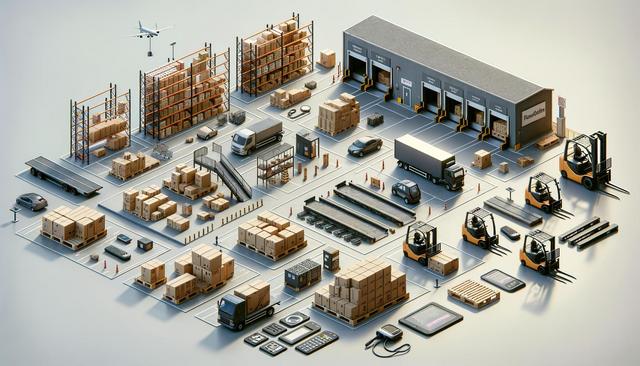Understanding the Different Types of Warehouse Services
Warehouse services encompass a variety of solutions designed to help businesses manage their goods efficiently. These services are not one-size-fits-all; rather, they cater to specific needs across different industries. At the most basic level, warehouse services include the storage of goods. However, modern warehousing extends beyond simple storage to include advanced inventory tracking, climate-controlled environments, and specialized handling for delicate or hazardous materials.
Some common types of warehouse services include:
- Public Warehousing: Shared space with multiple clients, suitable for short-term or seasonal needs.
- Private Warehousing: Dedicated facilities for one business, offering greater control and customization.
- Contract Warehousing: Long-term agreements providing tailored service levels and predictable costs.
- Distribution Centers: Facilities focused on rapid movement of goods for order fulfillment.
Choosing the right type depends on your business scale, product type, and logistics model. Retailers might prioritize distribution centers for fast turnover, while manufacturers may look for bulk storage and value-added services like packaging or assembly.
The Role of Technology in Modern Warehousing
Technology has significantly transformed warehouse operations, enhancing both efficiency and accuracy. Warehouse Management Systems (WMS) are now central to managing inventory flows, tracking stock levels in real time, and integrating with other enterprise systems. Automation tools like barcode scanners, RFID tags, and robotic picking systems help reduce errors and labor costs.
For businesses seeking precision and scalability, leveraging technology is no longer optional. Some of the key technological solutions found in modern warehouse services include:
- Real-time inventory tracking to prevent stockouts or overstocking
- Automated picking and packing systems to speed up order processing
- Cloud-based WMS that integrates across supply chain platforms
- Data analytics for forecasting demand and optimizing storage
These innovations not only streamline operations but also provide valuable insights for strategic decision-making. As e-commerce continues to grow, the need for tech-enabled warehousing becomes even more critical to meet customer expectations for speed and accuracy.
Key Considerations When Choosing a Warehouse Service
Selecting the appropriate warehouse service involves evaluating several important factors. Businesses must consider their product types, volume of goods, geographic coverage, and expected growth. For example, a business with perishable goods will need temperature-controlled storage, while one with a national customer base might require multiple strategically located facilities.
Other essential considerations include:
- Scalability: Can the warehouse accommodate your business growth?
- Compliance: Does the provider meet industry-specific regulations?
- Security: Are there adequate measures to protect your inventory?
- Service Level Agreements (SLAs): What guarantees are in place for turnaround times and accuracy?
It’s also helpful to assess the provider’s experience with your industry. A warehouse service that understands the nuances of retail distribution versus manufacturing logistics can offer more targeted solutions. Additionally, transparency in pricing and operational flexibility can make a significant difference in long-term cost efficiency.
Benefits of Outsourcing Warehouse Services
For many companies, outsourcing warehouse services offers a practical and cost-effective alternative to managing inventory in-house. Partnering with a third-party logistics provider allows businesses to focus on core operations like product development and customer engagement while leaving the complexities of storage and distribution to specialists.
The advantages of outsourcing include:
- Reduced capital investment in infrastructure and technology
- Access to experienced logistics professionals and advanced systems
- Improved order accuracy and faster fulfillment times
- Scalability during peak seasons or business expansion
Outsourcing can also lead to better geographic reach, as many providers operate multiple facilities across regions. This allows for reduced shipping times and lower transportation costs. While outsourcing may not fit every business model, it is a valuable option for companies seeking agility and operational efficiency in their supply chain.
How to Evaluate a Warehouse Partner
Choosing the right warehouse partner is a strategic decision that can impact your entire supply chain. Beyond checking for basic capabilities, it’s important to dig deeper into the provider’s track record, customer service approach, and ability to adapt to your evolving needs. Begin by requesting case studies or references from similar businesses they have served. A reliable partner should be transparent about their performance metrics and client feedback.
Key evaluation criteria include:
- Technology integration capabilities with your existing systems
- Customizability of services to match your specific requirements
- Responsiveness and communication from account managers
- Proven history of meeting SLAs and handling exceptions
Conducting a site visit can also shed light on operational standards and workforce competence. Look for signs of efficiency, cleanliness, and organization. A good warehouse partner not only stores your products, but also actively contributes to improving order fulfillment and customer satisfaction. Establishing clear expectations and maintaining regular communication will further strengthen the partnership over time.
Conclusion: Aligning Warehouse Services with Business Goals
Warehouse services are a crucial component of efficient supply chain management. Whether you’re in retail, e-commerce, or manufacturing, the right warehousing strategy can support growth, improve customer satisfaction, and reduce operational costs. By understanding the types of services available, leveraging modern technology, and carefully selecting a service provider, businesses can create a logistics framework that aligns with their long-term goals. The key is to view warehousing not just as storage, but as a value-adding function that drives overall performance.



Leave a Reply